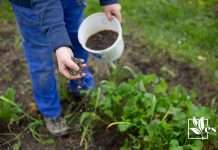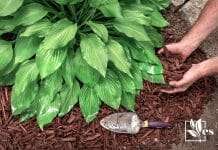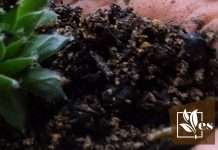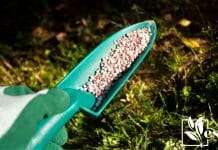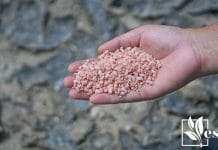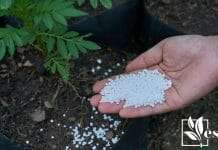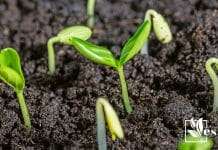In my gardening experience, using coffee grounds as a fertilizer for tomato plants has become a common practice among gardeners seeking organic solutions. Not only do coffee grounds add vital nutrients to the soil, like nitrogen, which is essential for plant growth, but they also help with water retention and may suppress certain fungal diseases.
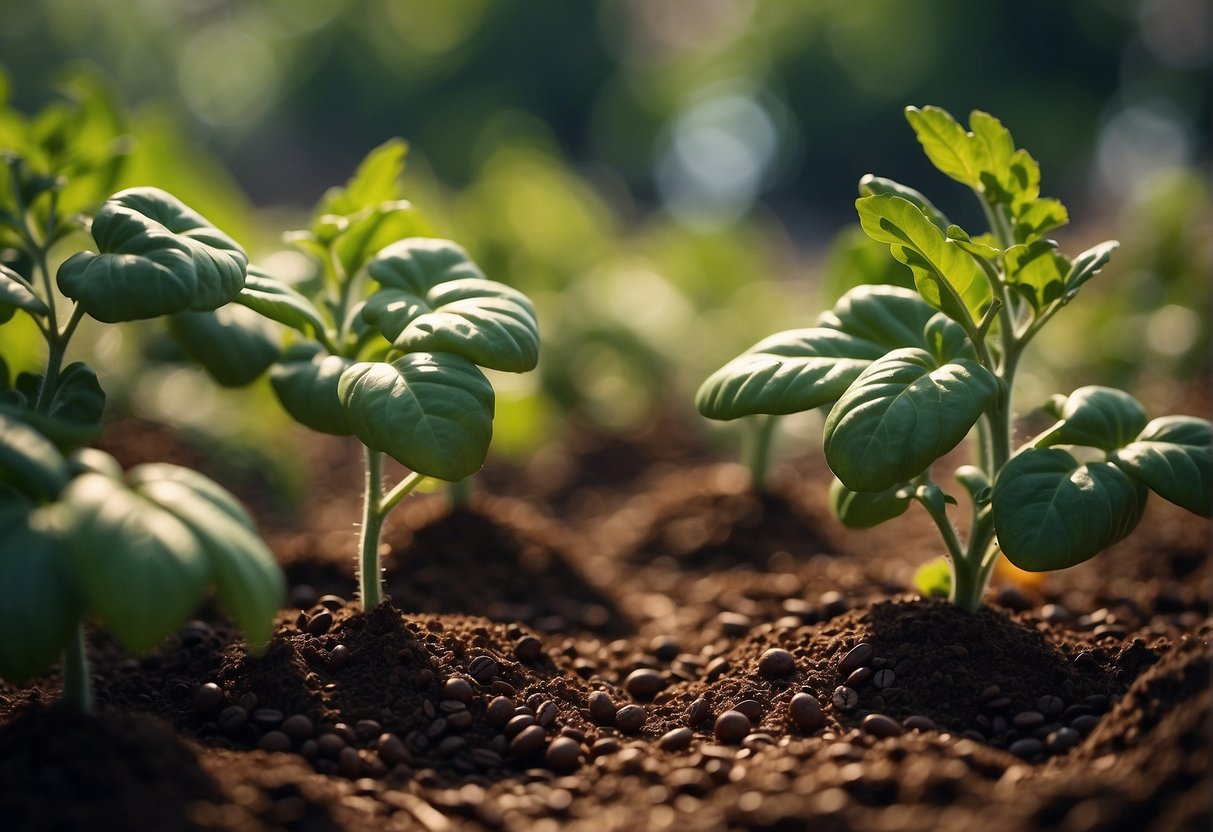
Conventional wisdom often claims that coffee grounds acidify soil, but it’s important to note that used coffee grounds are generally pH neutral. Tomatoes do enjoy slightly acidic soil, so even if there were a minor effect, it would typically benefit the plant. While not all soils and coffee grounds are the same, I’ve found that moderate use of coffee grounds can encourage healthier tomato plants.
Understanding the balance within the compost or soil is crucial when adding coffee grounds. It’s not simply a matter of tossing them in; they should be mixed with other organic matter to avoid dense clumps that might hinder growth. This approach contributes to the overall health of the tomato plants by creating a more hospitable soil environment and providing a slow release of nutrients as the grounds decompose.
JUMP TO TOPIC
Benefits of Using Coffee Grounds as Fertilizer
I find that adding coffee grounds to my tomato plants helps improve their growth and health.
💚 Nutrient-Rich
In my experience, coffee grounds provide essential nutrients to soil which benefit tomato plants. Rich in **nitrogen**, and containing key minerals such as potassium, and phosphorus, they feed plants and encourage robust growth.
I’ve noticed that incorporating coffee grounds enhances soil structure by adding organic matter. This improves aeration and water retention, fostering a conducive environment for root development.
Anecdotal evidence suggests that the caffeine in coffee grounds deters pests like slugs and snails, which are less likely to bother treated plants.
I also use coffee grounds as a composting agent. They’re effective in activating compost piles, resulting in rich compost that can be used to fertilize tomato plants later.
🐌 Fungal Diseases Reduction
Coffee grounds have antifungal properties that can help prevent fungal diseases in tomatoes. By adding them to the soil, I’ve seen a reduction in common issues like tomato blight.
Optimizing Soil for Tomato Plant Growth
To grow healthy tomato plants, the right soil conditions are crucial. They need a specific pH level and a balance of nutrients for optimal growth.
Adjusting Soil Ph for Tomato Plants
💥 The Ideal pH Range
Tomato plants thrive in soil with a pH that is slightly acidic, usually between 6.0 and 6.8. This range encourages the uptake of essential nutrients.
Using coffee grounds may slightly lower the pH, which could benefit tomato plants if the soil is too alkaline. However, the impact on pH is negligible, so I rely on a soil test before making significant amendments.
Enhancing Soil Nutrients with Compost
Compost is a vital component in my garden because it introduces a wealth of essential nutrients into the soil that tomatoes need to grow, such as nitrogen, phosphorus, and potassium.
Nutrients Derived from Coffee Grounds:
- Nitrogen, which supports leaf growth
- Phosphorus, which contributes to roots and flowers
- Potassium for overall plant health
- Trace minerals such as calcium and magnesium
In my practice, incorporating compost, including coffee grounds, not only enriches the soil but also improves soil structure, enhances moisture retention, and supports beneficial soil organisms.
Natural Pest and Weed Management
When I cultivate tomato plants, my aim is to employ natural methods for deterring pests and controlling weeds. These methods contribute to a healthier garden ecosystem.
Using Coffee Grounds to Deter Pests
I’ve found that coffee grounds can act as a deterrent against certain garden pests, particularly slugs and snails. These pests are averse to caffeine, which is present in coffee grounds. By creating a barrier with the grounds, I protect the plants from these critters. However, it’s important to note that the effectiveness of coffee grounds in pest deterrence is debated and evidence of their success is limited.
- Slugs and Snails: They are deterred by the caffeine in coffee grounds.
- Deterrent Limitations: Empirical evidence on coffee grounds as a comprehensive pest deterrent shows mixed results.
I often sprinkle coffee grounds around my tomato plants to help deter slugs and snails.
Mulching to Control Weeds and Retain Moisture
Mulch made from coffee grounds not only suppresses weed growth around tomato plants but also aids in retaining soil moisture. I’ve noticed that it forms a protective layer that prevents weed seeds from taking root.
- Suppression of Weeds: Coffee grounds as mulch inhibit weed germination and growth.
- Soil Moisture: Mulching with coffee grounds helps maintain consistent soil moisture levels, which is beneficial for tomato plants.
Moreover, coffee grounds contribute to soil acidity, which can be advantageous for acid-loving plants, although tomatoes thrive in neutral to slightly acidic soil. Therefore, I use coffee grounds judiciously to avoid overly acidic conditions that might disrupt tomato plant growth.
- Acidity: Coffee grounds can increase the acidity of the soil.
- Acid-Loving Plants: Ideal for plants that require acidic soil conditions, but usage should be monitored for tomatoes.
Furthermore, mulching with coffee grounds may attract earthworms, which are beneficial for soil health and structure. Earthworm activity improves aeration and nutrient availability in the garden.
- Earthworm Attraction: Coffee grounds can attract earthworms, improving soil quality and structure.
Fertilization Techniques for Robust Tomato Plants
💥 Key Points
Understanding the proper fertilization techniques is crucial for promoting healthy tomato plant growth. I’ll guide you on how to apply slow-release fertilizers and outline effective fertilizing schedules and methods.
Applying Slow-Release Fertilizers
For optimal nutrient absorption, slow-release fertilizers are a reliable choice for tomatoes. These fertilizers break down gradually, providing a steady supply of nutrients over time. I recommend using organic options as they not only feed your 🍅 plants but also improve soil health.
- Nutrients are delivered over several months, reducing the risk of over-fertilization.
- Prevents nutrient runoff and promotes sustainable gardening practices.
- Enhances root growth and strengthens the plant’s resistance to pests and diseases.
Fertilizing Schedule and Methods
I’ve learned through experience that when to fertilize is just as important as how to do it. After planting my tomato seedlings, I generally apply a balanced liquid fertilizer weekly until they begin to fruit. Once fruiting starts, I switch to a low-nitrogen, high-phosphorus fertilizer to encourage blooming and fruit development.
- Use a diluted liquid fertilizer to avoid burning the roots.
- Apply fertilizers early in the morning or late in the afternoon to prevent evaporation losses.
- Alternate between foliar feeding and soil application to maximize nutrient uptake.
The frequency of application depends on the fertilizer type and the growth stage of the tomato plants. Lighter, more frequent feedings help prevent nutrient overload and support steady growth.



